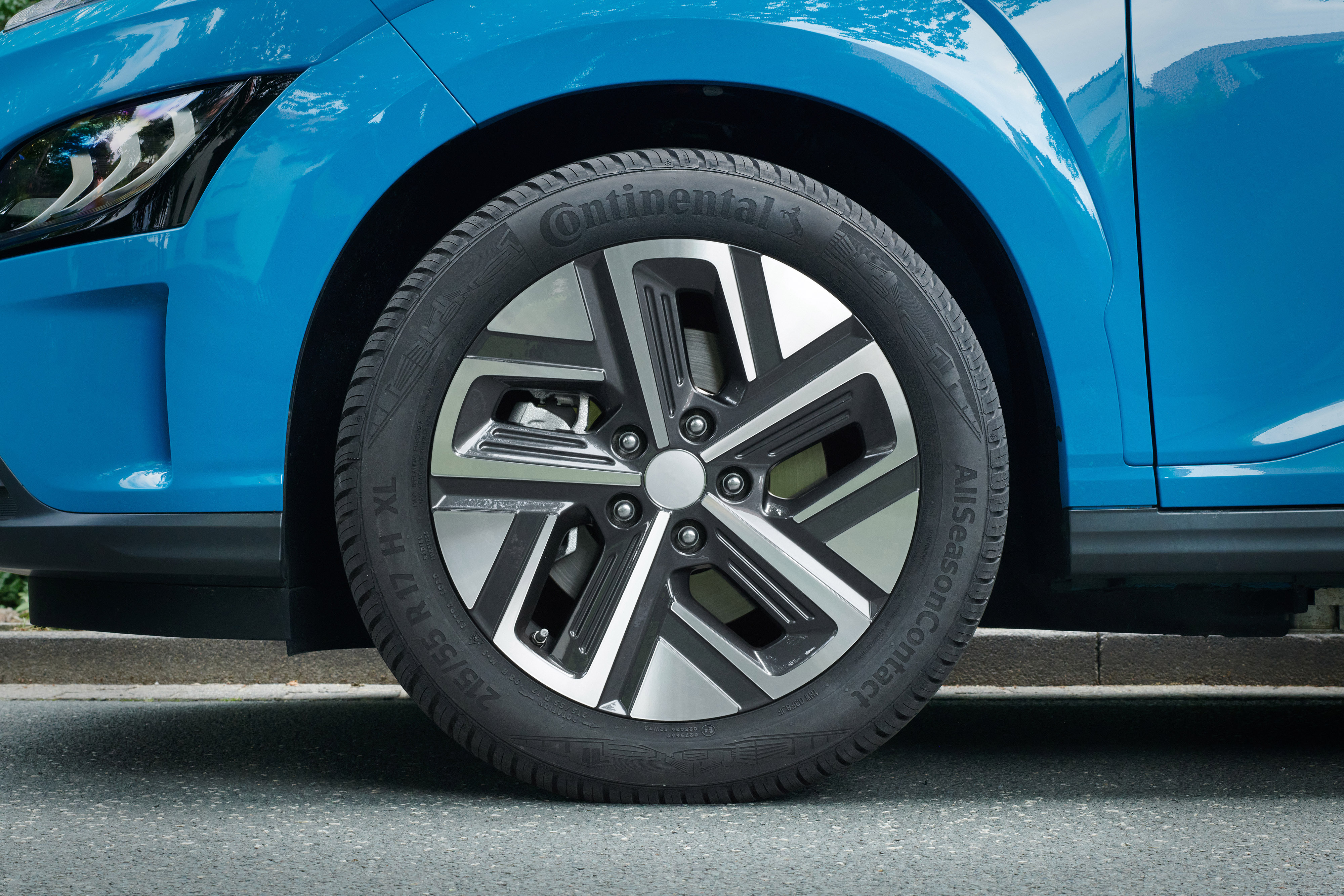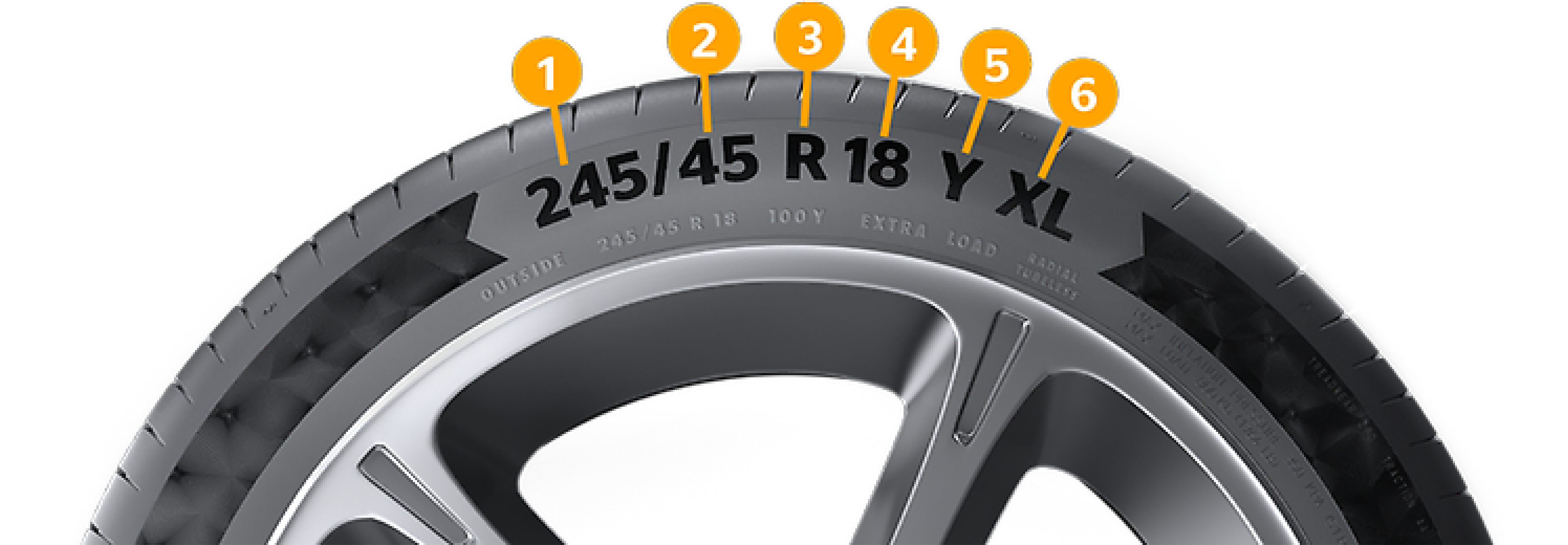
# Buying Tyres
New tyre purchase guide
Know the facts before you buy new tyres
The performance and handling of your vehicle depend on the tyres. After all, tyres are the only point of contact between the car and the road.
So, when it's time to buy a set of new tyres for your vehicle, there are multiple factors you'll want to take into consideration, including your driving style, budget, and the region where you live.

Key requirements
The first requirement when choosing new tyres is that they are compatible with your vehicle. Your owner’s manual and documentation will have a list of compatible tyre types. You can also find the the key characteristics of a tyre on its sidewall. Look at the tyres your car has now and use that as a starting point.

We strongly recommend that a vehicle uses the same tyres on each wheel position. This uniformity is vital to maintaining performance and control over your car.

Tyre size is provided as width, diameter and height-to-width aspect ratio. The width is a three-digit number measuring the number of millimetres from one sidewall to the other (1). The ratio is a two or three-digit percentage of the height compared to the width (2). The diameter, specified in inches, must match the wheel size of your vehicle.
Tyres can also vary in construction, indicated by the letter R (3). Until the 1970s, cross-ply tyres were the most common; they had a casing made from rubberised cord plies with edges wrapped around the bead wire. In modern car engineering, the radial tyre has completely replaced the cross-ply tyre. The cords in a radial tyre casing run perpendicular to the direction of travel. Viewed from the side, the cords run radially – giving the tyre its name.
The tyres must be able to support the load of the vehicle; this capacity is called the load index. Look up the index to determine the weight, then multiply it by the number of tyres to get the total load supported. The speed rating, denoted as a letter on the sidewall (5), is the maximum speed the tyre is capable of. Be aware that tyres with a higher maximum speed tend to have faster tread wear. The speed rating must be at least as high as the vehicle’s top speed.
The manufacturer also provides you with information on the ideal tyre pressure for optimal operation of the car. Be very careful if operating a tyre near its maximum rated pressure; it changes vehicle handling and increases wear on the tyre.
Be sure to check the sidewall for other information like size (6), safety codes and association icons. They tell you whether it’s approved for your country and meets common quality standards.
Optional considerations
Taken together, the key requirements for a tyre narrow down your selection. But passenger car tyres still come with many other options. Choosing the right tyre for you depends on your driving style and budget.
Are you looking for a quiet, comfortable ride? Tyres in this category have a tyre tread designed to minimise noise. But the tread rubber may be softer, which increases the rate of wear. Therefore, quiet tyres are best suited for paved roads.
Or perhaps you’re looking for tyres that offer the best fuel efficiency? These tyres have a tread with lower rolling resistance, which provides substantially improved fuel economy.
If you drive on unpaved roads or enjoy some off-roading, tyre versatility is essential. An all-terrain tyre may be enough. Or you may consider the added sidewall protection of an off-road tyre. Many specialty 4x4 tyres, such as mud tyres, offer added traction for various terrains.
Finally, be aware that different tyre types handle differently. Give yourself time to adjust when driving, accelerating and braking with new tyres.
Winter, summer and all-season tyres
Driving conditions vary throughout the year. So, when it’s time to buy new tyres, the first thing you should do is consider the climate where you live. Depending on your region’s climate, it may be better to alternate between a set of summer and winter tyres, or it could be sufficient to stick with all-season tyres.

Winter tyres have a tread pattern designed to be effective on snow and slush and are able to withstand freezing temperatures. Most importantly, they offer improved handling and shorter braking distances on snow and ice.
Summer tyres offer excellent road grip, handling, and shorter braking distances on dry roads and are also able to handle slippery roads following heavy rain.
Continental all-season tyres work in a variety of conditions. For drivers, living in regions with mild winter conditions (temperatures rarely drop below freezing), all-season tyres can be an alternative. Continental all-season tyres offer safety and premium performance. In addition, drivers can save cost, time and reduce efforts required for seasonal tyre changes.
If you are unsure about the right tyre choice, please contact your local dealer for personal advice.
Original equipment manufacturer tyres
Your car comes with pre-installed tyres. These are the original equipment (OE) tyres tyres chosen by the vehicle manufacturer, which meet their exact requirements having undergone a series of rigorous tests. OE tyres can be new designs, tweaks to an existing tyre or a preferred choice of stock tyre. For many drivers, picking OE tyres for their vehicle is a simple, fuss-free option.

Related articles
-
 2024/08/22Tread depthThe tire tread grips the road and wears down as you drive. To ensure your safety, measure the tread depth as part of your regular vehicle maintenance.Read more
2024/08/22Tread depthThe tire tread grips the road and wears down as you drive. To ensure your safety, measure the tread depth as part of your regular vehicle maintenance.Read more -
 2024/07/18Changing tyresThe seasons change, so why not the tires on your car? We explain how a driver should choose between summer tires, winter tires, or all-season tires.Read more
2024/07/18Changing tyresThe seasons change, so why not the tires on your car? We explain how a driver should choose between summer tires, winter tires, or all-season tires.Read more